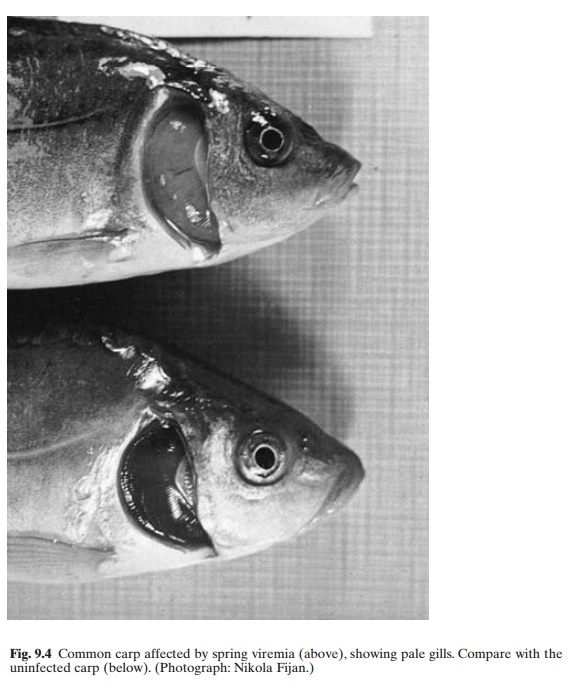Chapter: Aquaculture Principles and Practices: Health and Diseases
Infectious dropsy of carp (IDC) and spring viremia of carp (SVC) - Viral diseases of aquaculture species
Infectious dropsy of carp (IDC) and spring viremia of carp (SVC)
Infectious dropsy of carp was described by Schäperclaus in 1929 as the most serious disease of common carp and several other fish. The aetiology of IDC was controversial for many years. During the past 15 years it became evident that IDC includes several aetiologically different diseases, namely spring viremia of carp, carp erythrodermatitis, swim bladder inflammation, aeromonas septicaemia and

pseudomonas septicaemia. Methods of prevention and treatment of these diseases differ. Most researchers and diagnosticians have therefore discontinued use of the term IDC.
Spring viremia of carp (SVC) is an acute contagious disease caused by a rhabdovirus (fig. 9.4). The disease has so far only been recorded in Europe. It can cause high mortality in carp when the water temperature rises from 10 to
20°C in spring. Occasionally, SVC can also occur in late autumn or in winter. Mortalities cease at temperatures above 20–22°C. Silver carp and grass carp are also susceptible to SVC.
Signs of the disease include reduced movements and frequent resting, darkening of skin, bleeding in fins, skin, eyes and gills, faecal casts trailing from the protruding reddish anus, accumulation of fluid in the abdomen, protruding eyes, anaemia, inflamed intestine and bleeding in the internal organs. Diagnosis is confirmed by the isolation of the virus in cell cultures and its identification by a serum neutralization test. Secondary bacterial infections can aggravate the course of SVC and augment the losses.
The transmission of virus from brood fish to offspring can take place through eggs or sperm. The virus is relatively stable in water and mud. It enters the fish through the gills. Infection of the fish at water temperatures above 20°C results in an asymptomatic carrier state. Such carriers may have antibodies in the blood and are resistant to subsequent infection. Infected farms may therefore have few or no losses from SVC. Experiments indicate the possibility of SVC prevention by vaccination, but more research is needed before a safe and effective vaccine can be developed.
Eradication of SVC from large farms with a surface water supply is not possible. Small farms fed with well, spring or bore-hole water can be disinfected and kept free from SVC by the propagation of SVC-free stock.
Related Topics